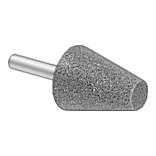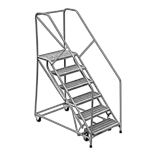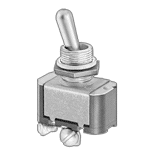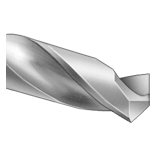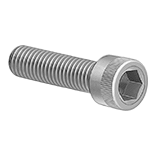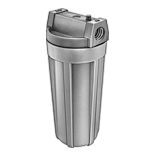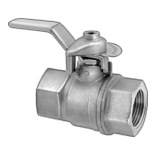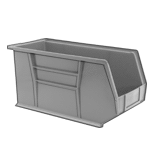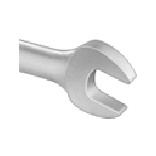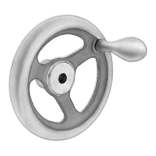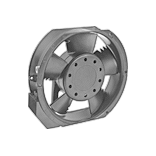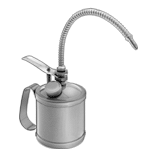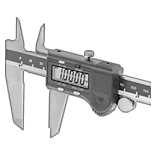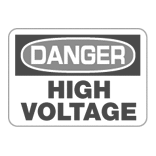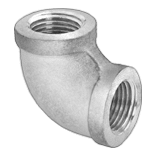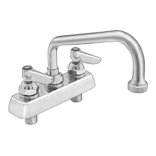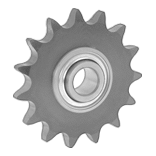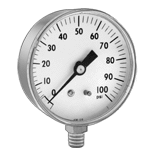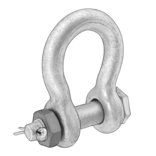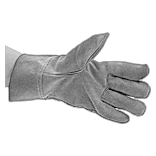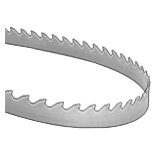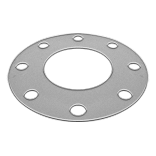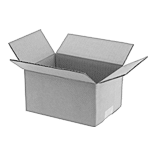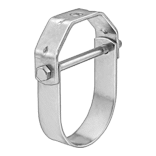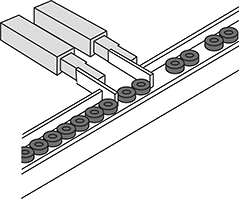Table Air Slides
For flexibility with your setup, mount equipment on top or in front of these air slides. Mount on top to reduce the space you need to move a full stroke length. Often used with gripping equipment, they have a larger mounting area than air cylinders. They also have two guide rods that keep the head steady as it extends and retracts.
A magnetic piston inside these slides activates relays and controllers when used with a sensor (sold separately). When the piston moves past the sensor, the sensor activates. You can use multiple sensors—one for each action you want to trigger.


Lg., mm | Air Inlet | |||||||||
|---|---|---|---|---|---|---|---|---|---|---|
| Stroke | Retracted | Extended | Force @ 100 psi, lbs. | Carriage Material | Thread Size | Thread Type | Gender | Dynamic Horizontal Load Capacity, lbs. | Each | |
8 mm Bore Size (26 mm Wd.) | ||||||||||
| 5 | 45 | 50 | 8 | Stainless Steel | M3 × 0.5 | Metric | Female | 13 | 0000000 | 0000000 |
| 10 | 45 | 55 | 8 | Stainless Steel | M3 × 0.5 | Metric | Female | 11 | 0000000 | 000000 |
| 15 | 55 | 70 | 8 | Stainless Steel | M3 × 0.5 | Metric | Female | 10 | 0000000 | 000000 |
| 20 | 55 | 75 | 8 | Stainless Steel | M3 × 0.5 | Metric | Female | 8 | 0000000 | 000000 |
| For Bore Size | DC Voltage | Environmental Rating | Each | |
| 3/4", 1", 1 1/4", 1 1/2", 2", 2 1/2", 4.5mm, 6mm, 8mm, 12mm, 16mm, 20mm | 4V DC-8V DC | IP67 | 0000000 | 000000 |
Clean Room Flexible-Mount Air Cylinders
Mount these cylinders directly to equipment in environments where contamination is a concern, such as electronics manufacturing. Use the threaded through-holes on the face to connect to equipment, or mount them with attachments (not included). Hook these cylinders into your compressed air line to push and pull loads. They’re double-acting, so they operate at full force in either direction. The magnetic piston inside these cylinders can activate relays and controllers when used with a sensor (not included). As the piston moves past the sensor, the sensor activates. You can use multiple sensors—attach one for each action you want to trigger.
Cylinders that are rated for use in Fed. Std. Class 10 and ISO Class 4 clean rooms have a port that connects to a vacuum or exhaust system to remove particles created by friction inside the cylinder before they contaminate your space. They’re also cleaned and bagged.
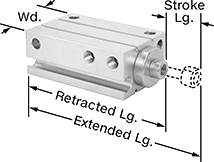
Lg., mm | Air Inlet | ||||||||||
|---|---|---|---|---|---|---|---|---|---|---|---|
| Stroke | Retracted | Extended | Force @ 100 psi, lbs. | Environmental Rating | Air Cushion Type | Body Material | Thread Size | Thread Type | Gender | Each | |
Sensor Ready | |||||||||||
8 mm Bore Size (13 mm Wd.) | |||||||||||
| 4 | 28 | 32 | 8 | Fed. Std. Class 10, ISO Class 4 | No Cushion | Aluminum | M3 × 0.5 mm | Metric | Female | 0000000 | 000000 |
| 10 | 34 | 44 | 8 | Fed. Std. Class 10, ISO Class 4 | No Cushion | Aluminum | M3 × 0.5 mm | Metric | Female | 0000000 | 00000 |
| 20 | 44 | 64 | 8 | Fed. Std. Class 10, ISO Class 4 | No Cushion | Aluminum | M3 × 0.5 mm | Metric | Female | 0000000 | 00000 |
Parts Metering Air Cylinders
Space out parts on your conveyor line or vibratory feeder. Also known as escapements, these air cylinders have at least one finger that extends to hold parts and then retracts to release them. The fingers are built to withstand force from the side, so your part won’t slip past. All fingers have tapped holes on all five of their faces, so you can mount attachments to any side of them.
One-finger cylinders can be spaced as far away from each other as needed, making them the best choice for use with large parts. Create a system of these air cylinders by placing multiple along your line to control the timing and speed with which they meter parts.
Two-finger cylinders are good for precisely positioning items for sealing, labeling, and inspection. Operating on fixed timing and sequencing, they extend one finger to stop a part then extend the other finger to separate it. The two fingers hold the part like you would between your thumb and index finger. When the part is ready to be released, they retract the first finger while the other finger continues to hold back other parts. Lastly, they retract the other finger to let the next part through.
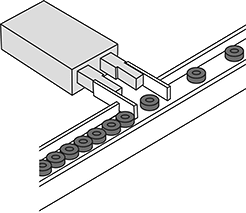
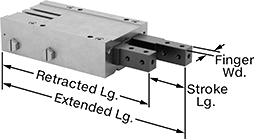
Lg. | Air Inlet | |||||||||
|---|---|---|---|---|---|---|---|---|---|---|
| Stroke | Retracted, mm | Extended, mm | Finger Wd., mm | Jaw Wd., mm | Sensor Ready | Thread Size | Thread Type | Gender | Each | |
8mm Bore Size (34mm Wd.) | ||||||||||
| 8 | 75 | 83 | 6 | 20.3 | Sensor Ready | M3 × 0.5mm | Metric | Female | 0000000 | 0000000 |
